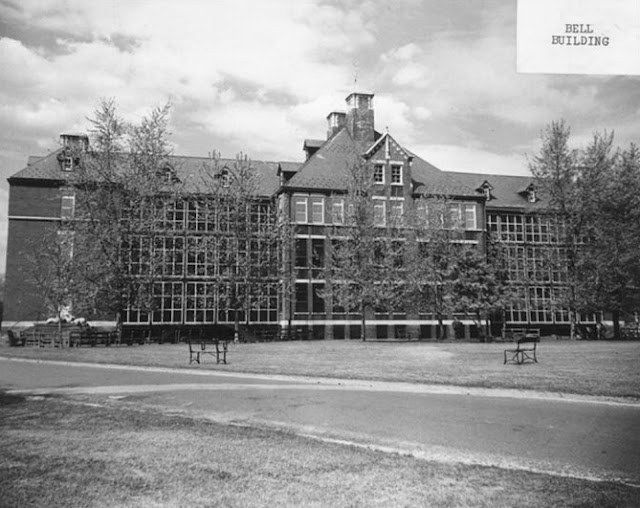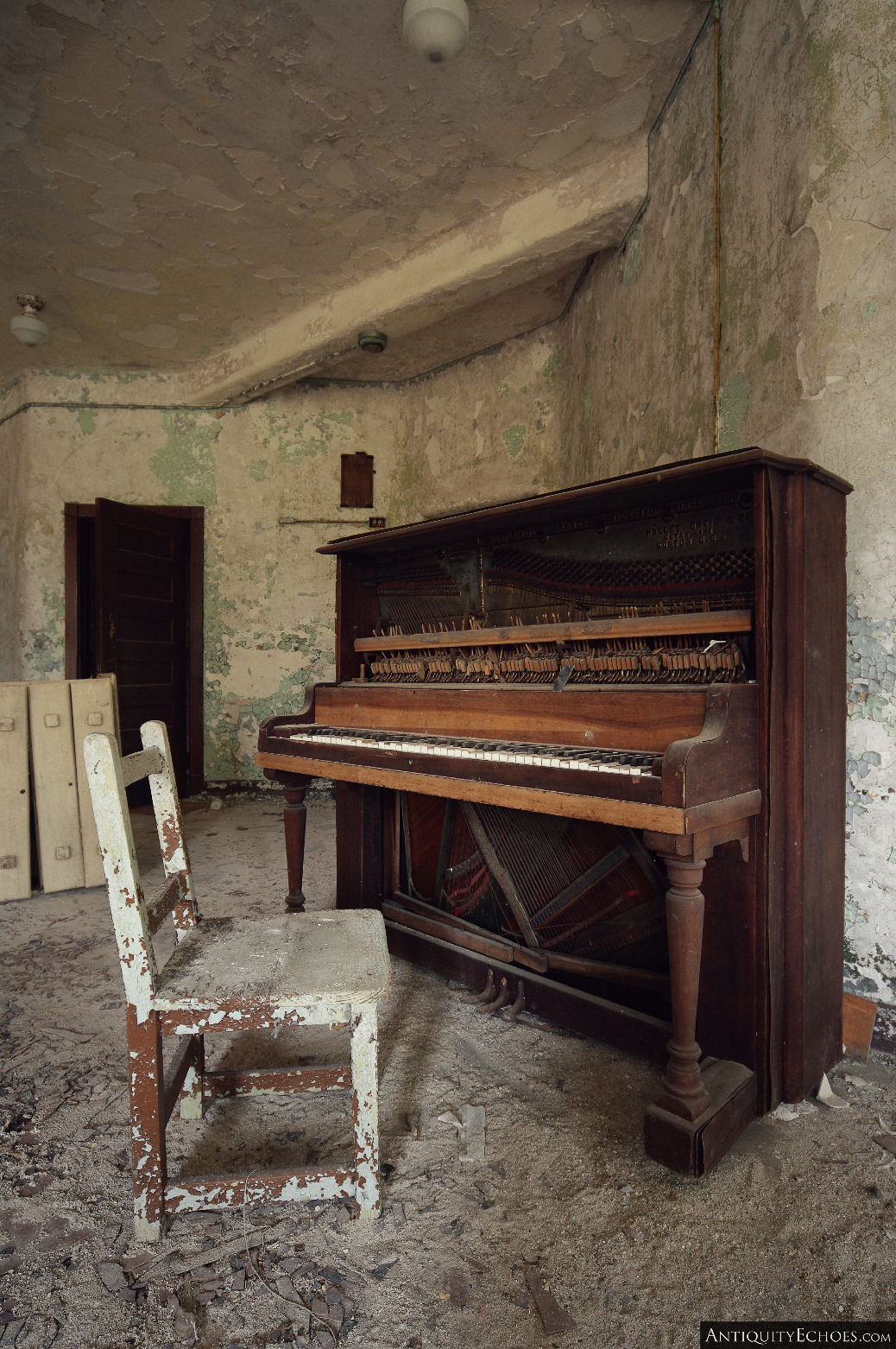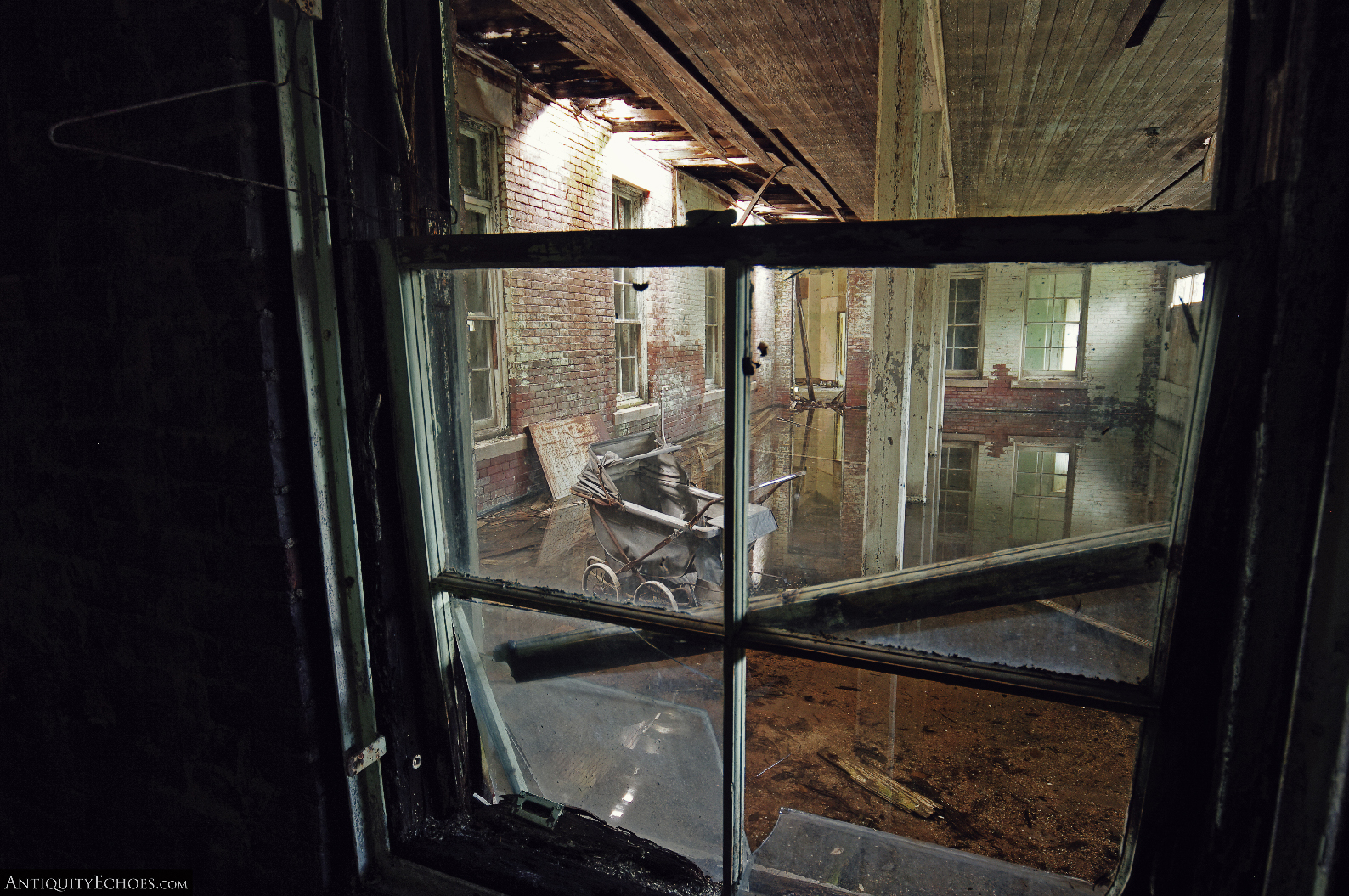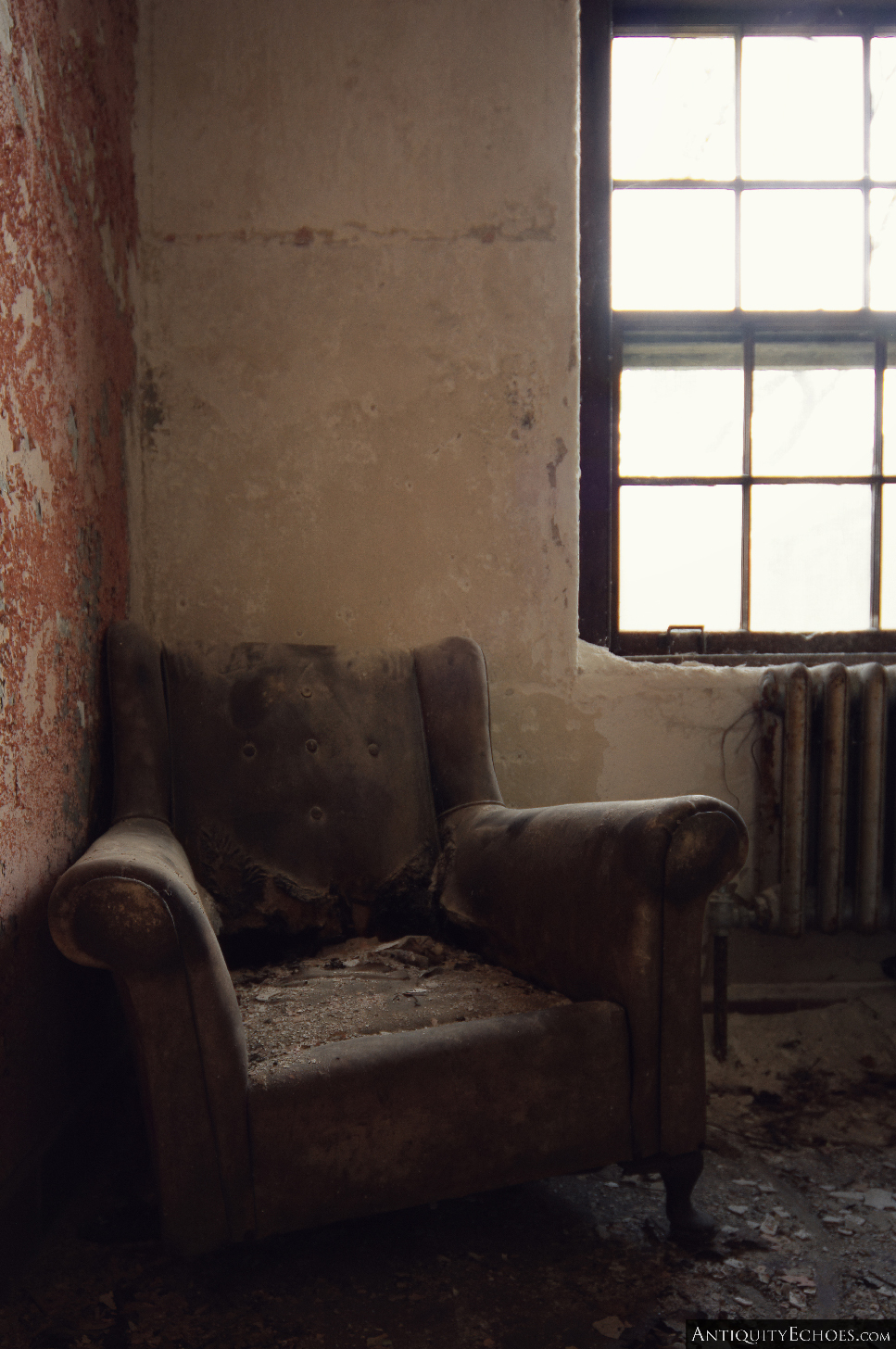Norwich State Hospital for the Insane
 Every so often one may find themselves
in a place where the environment itself has been deeply affected by
the history which it endured. Even the trees here seemed altered,
different from those in the forest just beyond the old boundary fence
- It was as if they whispered among themselves, recounting secrets
just beyond the edge of human hearing.
Every so often one may find themselves
in a place where the environment itself has been deeply affected by
the history which it endured. Even the trees here seemed altered,
different from those in the forest just beyond the old boundary fence
- It was as if they whispered among themselves, recounting secrets
just beyond the edge of human hearing.Pitted metal bars
framed countless windows that overlooked the decayed grounds of the
long-abandoned asylum. Upon our visit, this old campus was little
more than a gathering of sad and rotten buildings, but if one were to
have peered out those same windows some seventy years earlier, they
would have seen a massive city operating unto itself, with a populace
in the thousands. That was long ago though, and the patients who once
lived here have long moved on. Little remained, save for shadows - an
ever-present substance that came to dwell in each corner and corridor
of the former Norwich State Hospital for the Insane.
This
campus opened its doors in the towns of Preston and Norwich,
Connecticut, in the autumn of 1904. At the time the initial patient
count at the facility was under 100. However, not unlike numerous
institutions of its day, the patient population at the hospital grew
exponentially, and by 1930 the Norwich Hospital had stretched itself
out from a single hospital center to a campus of over twenty
buildings.
After peaking in population through the 1950s and
60s, the residents of the campus began to steadily decrease. This
depopulation was due to various factors, but was driven primarily by
advancements in psychiatric medications, and the increasing taboo
which the nation was feeling toward larger state mental hospitals.
During this time the facility began constructing new, modern,
buildings on a plot adjacent to where the original hospital center
stood. Every time a new building was opened, a building from the old
campus would be closed down. By the 1970s only a handful of original
buildings were in active use. When the Norwich Hospital finally
shuttered in 1996 only two of the original campus buildings were
still in use, and the remainders of the old campus were already
falling into disrepair.
It was the beautiful architecture of
the old asylum campus that drew us to this property, and it is
exclusively these buildings that we documented during our visit.
Though the newer campus certainly has its own tales to tell, we felt
those modern buildings lacked the level of character and history
which was found on the original hospital grounds. Sadly, if you visit
the property today you will find little more than a grassy field
where the historic asylum once stood. Demolition began on the
property in 2011, and over several years, every building on the old
campus was razed with the exception of administration, which is
currently mothballed to be utilized in the future development of the
grounds, whatever and whenever they may be.

























































